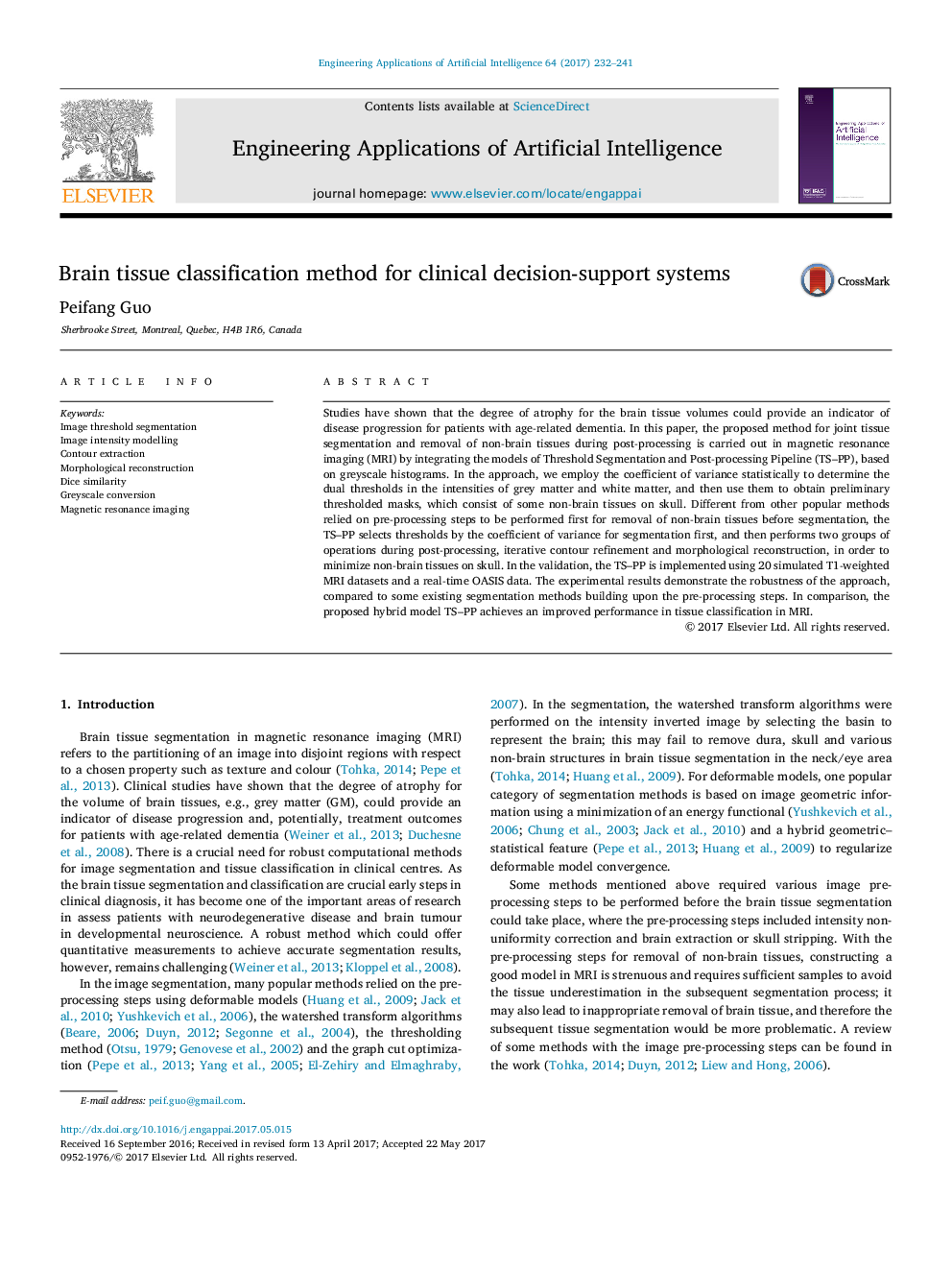| Article ID | Journal | Published Year | Pages | File Type |
|---|---|---|---|---|
| 4942659 | Engineering Applications of Artificial Intelligence | 2017 | 10 Pages |
Abstract
Studies have shown that the degree of atrophy for the brain tissue volumes could provide an indicator of disease progression for patients with age-related dementia. In this paper, the proposed method for joint tissue segmentation and removal of non-brain tissues during post-processing is carried out in magnetic resonance imaging (MRI) by integrating the models of Threshold Segmentation and Post-processing Pipeline (TS-PP), based on greyscale histograms. In the approach, we employ the coefficient of variance statistically to determine the dual thresholds in the intensities of grey matter and white matter, and then use them to obtain preliminary thresholded masks, which consist of some non-brain tissues on skull. Different from other popular methods relied on pre-processing steps to be performed first for removal of non-brain tissues before segmentation, the TS-PP selects thresholds by the coefficient of variance for segmentation first, and then performs two groups of operations during post-processing, iterative contour refinement and morphological reconstruction, in order to minimize non-brain tissues on skull. In the validation, the TS-PP is implemented using 20 simulated T1-weighted MRI datasets and a real-time OASIS data. The experimental results demonstrate the robustness of the approach, compared to some existing segmentation methods building upon the pre-processing steps. In comparison, the proposed hybrid model TS-PP achieves an improved performance in tissue classification in MRI.
Related Topics
Physical Sciences and Engineering
Computer Science
Artificial Intelligence
Authors
Peifang Guo,
